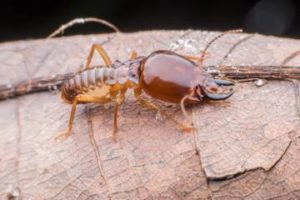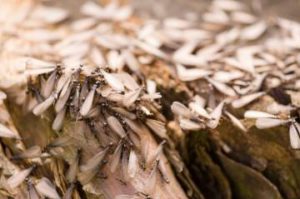Know the Difference Between Drywood and Subterranean Termites
If your home is invaded by termites – and there’s a good chance that at some point it will be — knowing the kind you have will determine the best application for treating your home. Let’s take a look at two of the most popular termite types we see in Florida: subterranean and drywood.
 Subterranean termites
Subterranean termites
Subterranean termites live in the ground and continuously enter and exit structures to feed on their wood. They live in the ground because they need excessive amounts of water to survive. Each colony can grow into the hundreds of thousands of individual termites.
These large colonies allow them to do the most amount of damage in the shortest period of time. Subterranean termites are also the most difficult to find for a couple of reasons:
- They rarely expose themselves.
- They feed inside the walls and even the attic areas that are difficult to access for a visual inspection.
If you discover you have subterranean termites, we have a bit of good news: They are the easiest – and least expensive — to control and prevent. A single termiticide application in the soil around the perimeter of the home can provide up to 13 years of active protection.
 Drywood termites
Drywood termites
Drywood termites live in wood. They’re also the most common in Florida and can survive off the moisture that is naturally in wood. We usually find them in baseboards, door frames, wall studs, attic rafters, and furniture. Quick fact: Drywood termite colonies cannot swarm (or spread) until they are a minimum of three years old.
The only good thing – if it can be called that — about the drywood termite is that is takes years and years for them to cause structural damage. The colonies only grow into the hundreds or maybe thousands of individual insects. This means that it takes a really long time for them to cause damage, which usually happens in several different places. When building or remodeling your home, take special care: It’s possible to discover that the wood being used is infested. We’ve seen a new home that the owners had not even moved into yet where the kitchen cabinets were swarming with drywood termites. Buying used wooden items from garage sales, thrift stores, and antique shops can also be risky.
How to treat each type of termite
Because of how widespread drywood termites can be within the house, they often require tent fumigation for control. Or we may use a tentless foam application. For the subterranean species, a termiticide applied to your soil and under your house can be very effective. If you have both types of termites, we use a combination treatment. Treating them effectively is a complex process, so you should always leave it to the professionals.
Choose JD Smith for your termite control
Termite prevention and treatment is what we do. Our comprehensive termite control program reaches deep into the places where termites typically nest. We go behind your walls, under your home, and into your wood frames and attic to help rid you of these annoying and destructive invaders. Rely on JD Smith Pest Control to keep your home free of termites throughout the year. Be proactive and call our team to schedule a free inspection. Our certified inspectors are ready to provide a full assessment of your home for its current state of termites and choose the best application to keep you, your family, and your property safe.
Link to the fumigation post from April.



